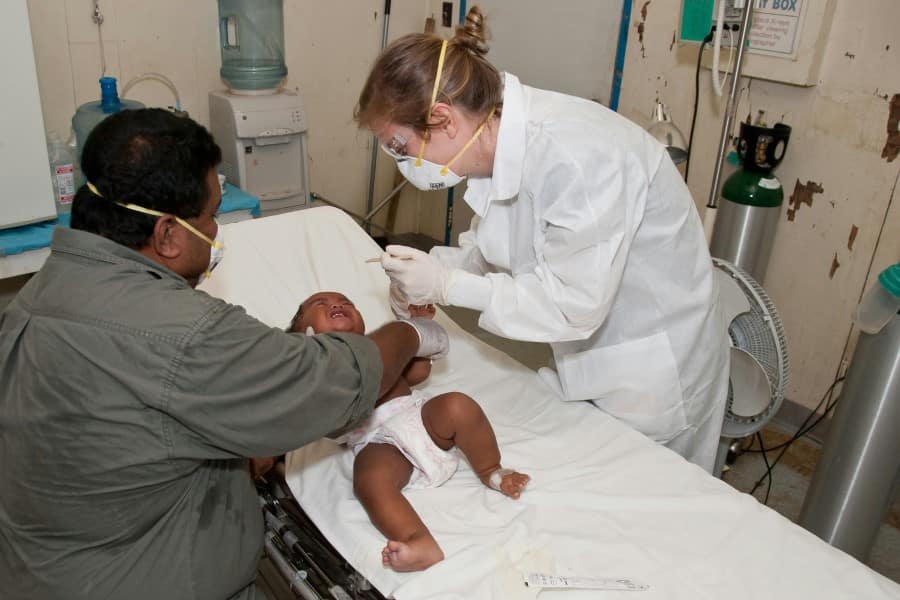Health Implications Of Poverty: 22 Examples

Poverty and health are inextricably linked, with impoverished individuals facing a wide array of health challenges. Poverty exacerbates health issues due to lack of access to healthcare, poor living conditions, inadequate nutrition, and limited educational opportunities. This article explores 22 health implications of poverty, providing examples to illustrate the profound impact of socio-economic status on health.
1. Malnutrition
Malnutrition is a critical issue among impoverished populations. Limited access to nutritious food leads to deficiencies in essential vitamins and minerals.
Example: In sub-Saharan Africa, many children suffer from stunted growth due to chronic malnutrition, impairing their physical and cognitive development.
2. Infectious Diseases
Poverty-stricken areas often lack proper sanitation and clean water, facilitating the spread of infectious diseases.
Example: Cholera outbreaks are common in impoverished regions without access to clean drinking water, causing severe dehydration and death if untreated.
3. Chronic Diseases
Individuals in poverty are more likely to suffer from chronic diseases due to unhealthy lifestyles and lack of preventive care.
Example: Diabetes prevalence is higher among low-income populations in the United States, where access to healthy food and healthcare is limited.
4. Mental Health Issues
The stress of living in poverty can lead to various mental health problems, including depression and anxiety.
Example: In low-income urban areas, high rates of depression are observed, exacerbated by unemployment and social isolation.
5. Maternal Health Complications
Poor women often lack access to prenatal and postnatal care, resulting in higher rates of maternal and infant mortality.
Example: In South Asia, maternal mortality rates are significantly higher among impoverished women due to lack of access to skilled birth attendants and emergency obstetric care.
6. Child Mortality
Children in poverty face a higher risk of dying before the age of five due to preventable diseases and malnutrition.
Example: In sub-Saharan Africa, child mortality rates are alarmingly high, with many deaths attributed to malaria, pneumonia, and diarrhea.
7. Respiratory Infections
Overcrowded living conditions and exposure to indoor pollutants increase the risk of respiratory infections.
Example: Tuberculosis rates are higher in densely populated slums, where ventilation is poor and healthcare is inaccessible.
8. Lack of Immunizations
Poverty often results in lower immunization rates, leaving children vulnerable to preventable diseases.
Example: In rural parts of India, children miss out on essential vaccinations, leading to outbreaks of measles and other preventable illnesses.
9. Substance Abuse
Economic stress and lack of opportunities can lead to higher rates of substance abuse among impoverished populations.
Example: Alcoholism is prevalent in economically depressed areas, contributing to a cycle of poverty and health deterioration.
10. Dental Problems
Limited access to dental care leads to untreated dental issues, which can cause pain and further health complications.
Example: In rural America, many individuals suffer from severe dental problems, leading to infections and chronic pain due to the absence of affordable dental services.
11. Cardiovascular Diseases
Poor diet, stress, and lack of healthcare access increase the risk of cardiovascular diseases in low-income populations.
Example: Hypertension and heart disease rates are higher among African American communities, where poverty rates are also elevated.
12. HIV/AIDS
Poverty increases vulnerability to HIV/AIDS due to lack of education, healthcare, and preventive measures.
Example: In sub-Saharan Africa, poverty-stricken areas have high HIV prevalence rates, with limited access to antiretroviral therapy.
13. Malaria
Living in regions without adequate malaria control measures, impoverished individuals face higher infection rates.
Example: Malaria remains a major health issue in parts of Africa, where poverty limits access to mosquito nets and effective treatments.
14. Obesity
Paradoxically, obesity rates can be higher in impoverished areas due to limited access to healthy foods and recreational activities.
Example: In the United States, low-income neighborhoods often lack grocery stores with fresh produce, leading to higher obesity rates.
15. Lack of Mental Health Services
Impoverished individuals often lack access to mental health services, exacerbating psychological issues.
Example: In rural India, mental health services are scarce, leaving many individuals without necessary treatment for conditions like schizophrenia and depression.
16. High Rates of Accidents
Unsafe living and working conditions increase the risk of accidents and injuries among impoverished populations.
Example: In developing countries, children often work in hazardous environments, leading to a high incidence of work-related injuries.
17. Poor Reproductive Health
Limited access to reproductive health services leads to higher rates of unintended pregnancies and sexually transmitted infections.
Example: In sub-Saharan Africa, lack of access to contraception and reproductive health education results in high rates of teenage pregnancies.
18. Shortened Life Expectancy
Overall life expectancy is lower for individuals living in poverty due to cumulative health risks.
Example: In the United States, there is a noticeable life expectancy gap between wealthy and impoverished communities, with poorer individuals living significantly shorter lives.
19. Hearing and Vision Impairments
Limited access to healthcare means that treatable conditions like hearing and vision impairments often go untreated.
Example: In impoverished areas of Southeast Asia, many children suffer from untreated vision problems, impacting their education and quality of life.
20. Poor Sanitation
Inadequate sanitation facilities increase the risk of waterborne diseases and other health issues.
Example: In slums around the world, lack of proper toilets and waste disposal systems leads to widespread disease outbreaks.
21. Hunger and Food Insecurity
Chronic hunger and food insecurity are direct results of poverty, leading to a host of health problems.
Example: In many parts of Africa and Asia, food insecurity leads to widespread malnutrition and stunted growth in children.
22. Exposure to Environmental Hazards
Poor communities are often located near environmental hazards, increasing exposure to toxins and pollutants.
Example: In many industrial areas, low-income neighborhoods are situated close to factories, exposing residents to harmful chemicals and pollutants.
Solutions and Interventions
To mitigate the health implications of poverty, several interventions can be implemented:
- Improving Healthcare Access: Establishing affordable and accessible healthcare facilities in impoverished areas can ensure that individuals receive necessary medical care.
- Nutrition Programs: Implementing nutrition programs, such as school meals and food assistance, can combat malnutrition and improve overall health.
- Educational Initiatives: Providing education on hygiene, nutrition, and preventive healthcare can empower communities to take charge of their health.
- Economic Opportunities: Creating job opportunities and supporting small businesses can help lift individuals out of poverty, improving their overall well-being.
- Community Support: Building strong community networks can provide support and resources to individuals in need, helping them navigate health challenges.
- Mental Health Services: Expanding access to mental health services can address psychological issues and improve quality of life.
- Public Health Campaigns: Raising awareness about the importance of healthcare, nutrition, and preventive measures can lead to healthier communities.
- Government Policies: Advocating for policies that support healthcare access, education, and economic development can create systemic change.
By implementing these solutions, we can address the root causes of health disparities and work towards a future where everyone, regardless of socio-economic status, has the opportunity to live a healthy life.
Health Implications Of Poverty Conclusion
The health implications of poverty are vast and multifaceted, affecting nearly every aspect of an individual’s life. Addressing these health challenges requires comprehensive solutions that encompass healthcare access, nutrition, education, and economic opportunities. By understanding and addressing the complex relationship between poverty and health, we can work towards creating a more equitable world where everyone has the opportunity to lead a healthy and fulfilling life.
Help Fight The Negative Effects Of Poverty
At End Poverty Now, our ability to make a difference hinges on the kindness of donors like you. Your support provides crucial resources, opportunities, and hope to those in need. Whether you choose to make a one-time donation or become a recurring donor, every contribution helps us on our mission to end extreme poverty.
End Poverty Now welcomes cash donations, but we also specialize in accepting donations of hard-to-sell assets such as real estate, aircraft, vehicles, and boats. These contributions help fund projects dedicated to alleviating poverty both domestically and internationally. Please see how you can help end poverty and thank you for considering us in your philanthropic efforts.
End Poverty Now is a 501c3 nonprofit charity accepting cash donations and specializing in donations of hard-to-sell assets such as real estate, aircraft, vehicles, and boats to fund projects aimed at fighting poverty at home and abroad.


